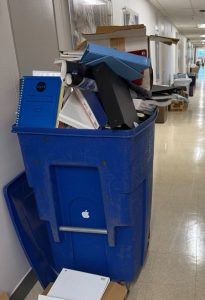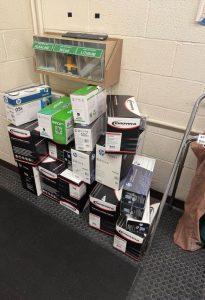Key Takeaways
- NASA workers fear strategic closures are gutting Goddard Space Flight Center during government shutdown
- 13 buildings being emptied, including 100 labs, with specialized equipment at risk of disposal
- Critical missions like Roman Space Telescope and Dragonfly could face delays
- Workers allege potential Antideficiency Act violations in shutdown procedures
NASA employees at the iconic Goddard Space Flight Center in Maryland are raising alarm over what they describe as the quiet gutting of the campus through strategic building closures during the federal shutdown. More than a dozen buildings are being emptied and padlocked with minimal notice, putting specialized equipment and future space missions at risk.
Sudden Closures During Shutdown
Furloughed workers received just days’ notice to return and empty buildings containing highly specialized equipment, according to internal emails and sources who spoke anonymously. NASA managers warned that equipment not moved in time—including one-of-a-kind hardware—could be discarded or donated.
A NASA spokesperson called the closures part of a “strategic consolidation” plan that shouldn’t affect ongoing projects. However, workers fear this represents an administration effort to implement proposed budget cuts that would reduce Goddard’s science staff by 42%.
“Getting rid of Goddard removes the entire nation’s capability to build, develop and analyze data from space science satellites,” one Goddard engineer told CNN.
Mission Critical Facilities at Risk
The closures threaten NASA’s most ambitious future missions. The Nancy Grace Roman Space Telescope, scheduled for 2027 launch, could face delays. This “super Hubble” successor is designed to study habitable planets and dark matter.
Similarly, the Dragonfly mission to Saturn’s largest moon, planned for 2028, might be affected. Both projects maintained funding in the President’s budget request, but workers worry the facility closures create operational hurdles.
“Stopping development of what’s in the pipeline now, you’re cutting off the next three decades of missions,” the engineer said. “It’s a really devastating loss to think about for the country.”
Unique Testing Facility Closed
Among the shuttered buildings is Goddard’s ElectroMagnetic Anechoic Chamber (GEMAC), a radio-proof room essential for testing spacecraft antennas. The facility’s unique design accommodates large equipment that won’t fit elsewhere.
Components for NASA’s Davinci Venus mission, scheduled for early 2030s, were slated for GEMAC testing. One source compared closing the operational facility to “taking a Maserati to the junkyard to get crushed because your driver’s license expired.”
NASA maintains GEMAC was in poor condition and alternative testing facilities exist. The agency claims no other projects needed GEMAC testing in the next 15 years.
Legal and Morale Concerns
Workers have raised concerns about potential Antideficiency Act violations, arguing that ordering furloughed employees to return for moving duties may breach federal shutdown procedures. The law generally prohibits unpaid work except to protect life or property.
NASA stated that “two exceptions were approved to maintain our schedule for facility movements” during the shutdown, primarily for technical equipment rather than office spaces.
The situation has devastated morale at a center already reeling from leadership changes and budget uncertainty. Goddard’s director resigned abruptly in July amid scientist protests against “rapid and wasteful changes.”
“It feels like an existential crisis; Goddard will either no longer exist at all or no longer exist the way it should,” one employee concluded.







